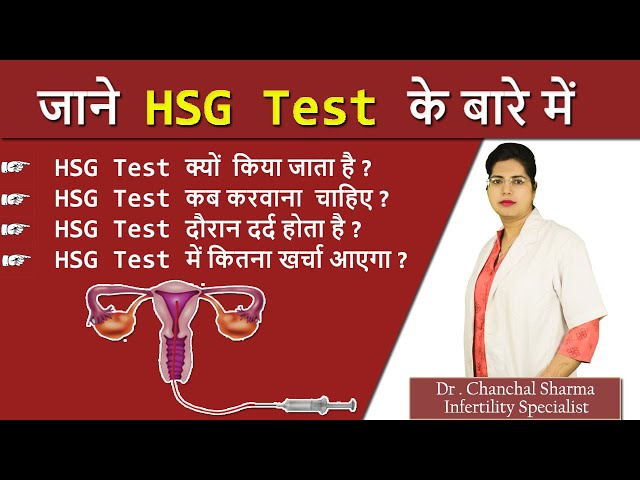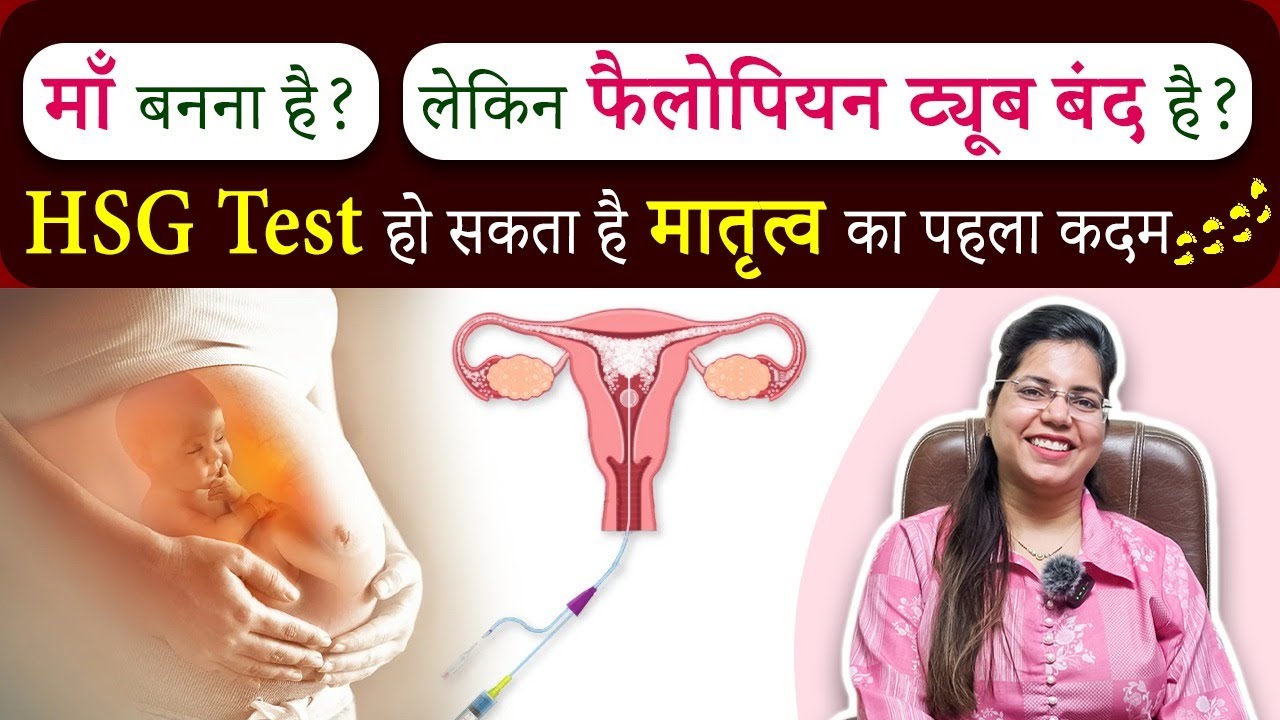When couples struggle with fertility, the journey to parenthood can often feel overwhelming and filled with unanswered questions. At Aasha Ayurveda Clinic — with centers across Delhi, Mumbai, Pune, Lucknow, and Hyderabad — we understand that identifying the root cause is the first step toward effective treatment. One of the diagnostic tools we frequently use to evaluate fertility issues is the Hysterosalpingogram (HSG).
This blog will walk you through everything you need to know about the HSG test — from what it is and why it’s done, to what to expect before, during, and after the procedure.
What is a Hysterosalpingogram?
A Hysterosalpingogram (HSG) is a test done for checking the blockage in the fallopian tube of a woman. This test is done by injecting a safe dye via cervix into the uterus. When the dye is inserted through one end of the tube it should reach the second end without any obstacle otherwise it will be considered a blocked fallopian tube.
As this happens, X-ray images are taken to track the dye’s movement. This gives your doctor a clearer picture of any blockages, scarring, or structural issues that may be affecting fertility.
When is a Hysterosalpingogram Performed?
HSG is typically scheduled 7 to 10 days after the start of your menstrual cycle but before ovulation. This timing helps ensure you're not pregnant during the procedure and that the uterine lining is thin, which allows for better imaging results.
Why Might You Need an HSG?
There are several reasons your doctor might recommend an HSG test:
- Difficulty Getting Pregnant: If you’ve been trying to conceive for over a year (or six months if you’re over 35), this test helps rule out blocked fallopian tubes or uterine abnormalities.
- Repeated Miscarriages: Structural problems in the uterus can sometimes cause pregnancy loss.
- Unexplained Pelvic Pain: An HSG can detect adhesions or scarring that might not be visible with an ultrasound.
- Post-Surgery Evaluation: If you've had tubal surgery or procedures like fibroid removal, HSG can help assess healing and tube functionality.
Who Performs the HSG Test?
At Aasha Ayurveda Clinic, HSGs are conducted by experienced radiologists or gynecologists who specialize in reproductive imaging. Our clinicians are trained not only to carry out the procedure safely but also to ensure your comfort and peace of mind throughout the process.
Understanding the HSG Procedure
- You lie on an X-ray table, similar to a position during a Pap smear.
- A speculum is inserted into the vagina to access the cervix.
- After cleaning the cervix, a thin catheter is inserted to introduce a contrast dye into the uterus.
- As the dye flows through the uterus and fallopian tubes, X-rays are taken.
- The dye outlines the reproductive organs, helping doctors spot blockages, irregularities, or structural concerns.
How to Prepare for a Hysterosalpingogram
Preparation is minimal, but a few simple steps can help the process go smoothly:
-
Timing is key – schedule it in the first half of your cycle, after your period ends.
-
Take a mild pain reliever like ibuprofen about an hour before the test to reduce cramping.
-
Inform your doctor about any allergies, especially to iodine or contrast dye.
-
Avoid intercourse for a few days before the test, as pregnancy must be ruled out.
At Aasha Ayurveda, our staff will guide you through all pre-test precautions based on your individual health needs.
What Happens During the Procedure?
Most patients find the test tolerable, though some describe it as mildly uncomfortable. You might feel cramping when the dye enters the uterus, similar to period pain. The entire process is brief, and the discomfort usually fades quickly after the test is over.
We understand that medical tests can be nerve-wracking, especially when they involve fertility. Our team does everything possible to make the experience as stress-free as possible.
Is HSG Painful?
This is one of the most frequently asked questions — and the answer varies from person to person. Many women feel mild to moderate cramping, especially during the dye injection, but it typically lasts just a few minutes. For most, it’s similar to menstrual cramps. If you’re especially sensitive, taking an OTC pain reliever beforehand helps significantly.
After the Test: What to Expect
-
Mild spotting or light bleeding for a day or two.
-
Discharge from the contrast dye — wearing a sanitary pad can help.
-
Cramping similar to period pain.
-
Fatigue or mild discomfort for a few hours post-procedure.
Are There Any Risks?
HSG is generally very safe, but like any medical procedure, it does carry some risks. These may include:
-
Infection (rare, especially when done under sterile conditions)
-
Allergic reaction to the dye (uncommon)
-
Fainting or dizziness
-
Uterine or fallopian tube injury (extremely rare)
At Aasha Ayurveda Clinic, we take every precaution to minimize risks and ensure your safety.
What Do the Results Mean?
- Normal result: The dye flows freely through the uterus and fallopian tubes, indicating they are open and properly shaped.
- Abnormal result: Blockages, unusual shapes, fibroids, or scarring may be found. This helps guide your next steps in fertility treatment or further diagnostic procedures.
Are There Side Effects of the HSG Test?
Most women feel fine afterward, but a few possible side effects include:
-
Cramping
-
Light bleeding
-
Temporary dizziness
-
Vaginal discharge from the dye
These effects are usually short-lived. If you develop fever, heavy bleeding, or severe pain after the test, it’s important to contact your doctor immediately.
Conclusion
The HSG test is a valuable tool in the journey to understand and overcome fertility challenges. While it may seem daunting, knowing what to expect can ease your mind and help you feel empowered.
At Aasha Ayurveda Clinic, we blend the power of modern diagnostics like HSG with time-tested Ayurvedic treatments to support your fertility goals in a holistic way. Whether you’re in Delhi, Mumbai, Pune, Lucknow, or Hyderabad, our experienced team is here to support you every step of the way.
Frequently Asked Questions (FAQs)
If you want more information on this topic or other PCOS, tubal blockages treatment, or hydrosalpinx treatments. Visit our website aashaayurveda.com
Consult our highly experienced and trained fertility specialists and gynecologists at these five branches of Aasha Ayurveda in Delhi, Mumbai, Pune, Hyderabad and Lucknow for a completely confidential consultation and get the best treatment for PCOD, PCOS, or female infertility.






